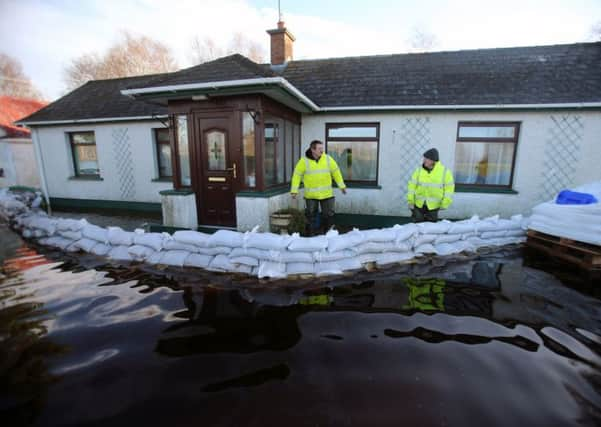Wettest year in 100 leads to fears of more Lough Neagh floods


Commenting on the fresh concerns raised by MLAs, Minister Hazzard said: “Rainfall totals have been well above average with this being the wettest winter in over 100 years.”
In January, water levels around Lough Neagh were at their highest for 30 years, causing severe damage to businesses and properties.
Advertisement
Hide AdAdvertisement
Hide AdMinister for Infrastructure, Chris Hazzard, said his department was conducting an investigation into the floods around Lough Neagh earlier this year.


“This review considers the causes of the flooding, the multi-agency response to the flooding, and the management and operating regime to control water levels in Lough Neagh,” he announced at the Northern Ireland Assembly.
“However, in the meantime, Rivers Agency will continue to monitor and regulate the levels of Lough Neagh within the prescribed limits as far as weather permits.”
The department is also promising to assist domestic property owners who wish to install individual protection at their homes to help reduce the impact of flooding through the Homeowner Flood Protection Grant Scheme.
Advertisement
Hide AdAdvertisement
Hide AdThe Bann is the only river that carries water from the lough while several major waterways flow into it, including the Upper Bann, Moyola and Ballinderry Rivers.


Dozens of smaller rivers and streams also carry floodwater into the lake, which is the largest in Ireland and Britain. Much of the land that has been flooded was reclaimed from the lough when water levels were lowered significantly in the 1950s.
Farmers had claimed that a build up of silt in the lough, along with the rivers flowing into it, had contributed to the problem.
Head of the Rivers Agency David Porter said that the current levels, he believed, were the best compromise.
Advertisement
Hide AdAdvertisement
Hide AdHe said three winter storms in quick succession in December had led to an unprecedented rainfall and that sometimes it was not possible to provide an engineering solution to flooding.


He added that, in the future, homes and businesses may have to assess the risk and adapt to cope with it.
“If the climate change predications are true then we’re fighting a losing battle,” he warned.
Businesses and householders claim more should be done to lower the lough levels in advance of wet weather.
However, Mr Porter has defended the rivers agency actions.
He said residents should keep an eye on water levels and if in danger call the flooding incident line on 0300 200 0100.